Second Punic War 218 - 201 BC | Rome takes over from Carthage Hispalis Ulterior - the Romans in Andalucia
By Nick Nutter | Updated 8 Mar 2022 | Andalucia | History |
Login to add to YOUR Favourites or Read Later
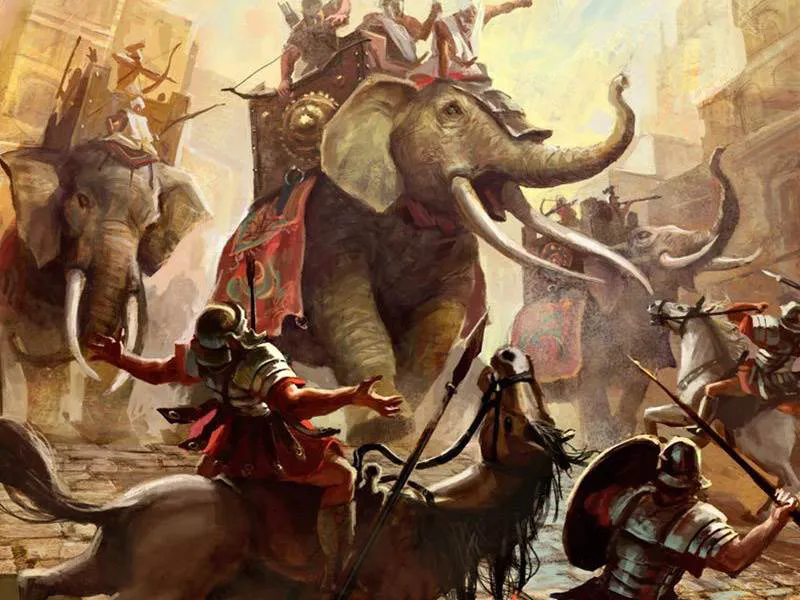
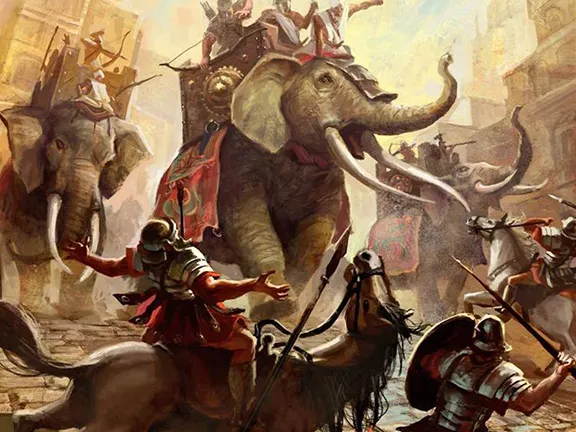
Hannibal and his elephants
This is a journey through Roman Andalucia. Like Pliny the Elder, we have created an itinerary that takes in the best examples of all things Roman, from their towns and their attention to the detail of town planning to their aqueducts, theatres, amphitheatres and, the feature they are most known for, their roads. Many of the sites we visit are now capital cities of the provinces, Seville, Cadiz, Jaen, Granada, Cordoba and Malaga, whilst others are lesser-known towns that have outstanding examples of some feature of Roman life like Rio Tinto, Carmona, Jimena de la Frontera, Ecija, Acinipo and Baelo Claudia. The whole series of articles is set in an historical context and chronology that takes us from Rome’s first venture into Spain, to their departure.
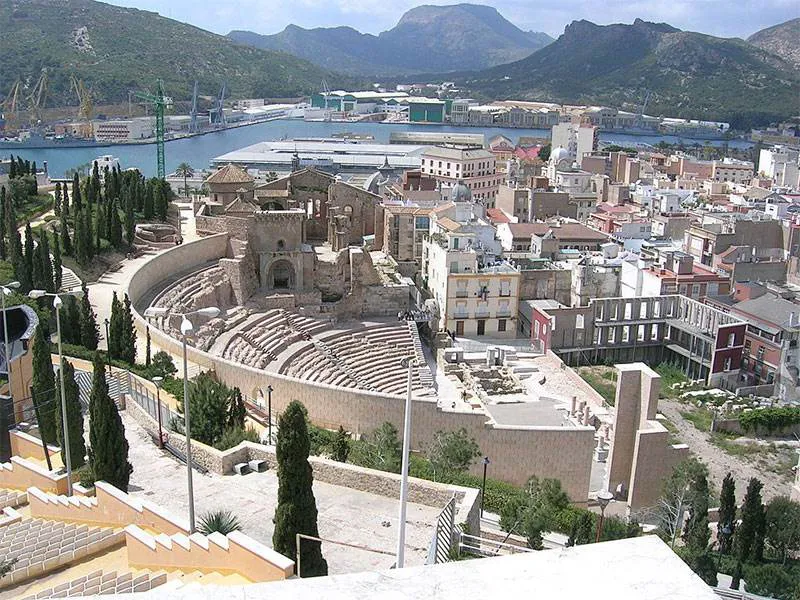
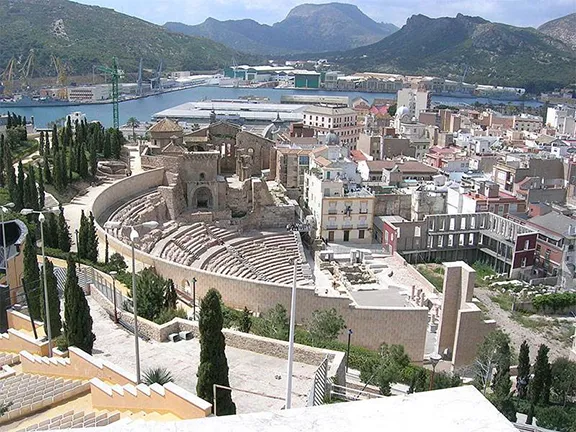
Cartagena
The first Punic War took place mainly in Africa and Sicily and at sea. It was fought between the new and expanding Roman Republic and the Carthaginians who were the dominant force in the western Mediterranean. The result was a Roman victory. Carthage lost Sicily and had to pay an indemnity to Rome. Carthage was left with its possessions in Iberia.
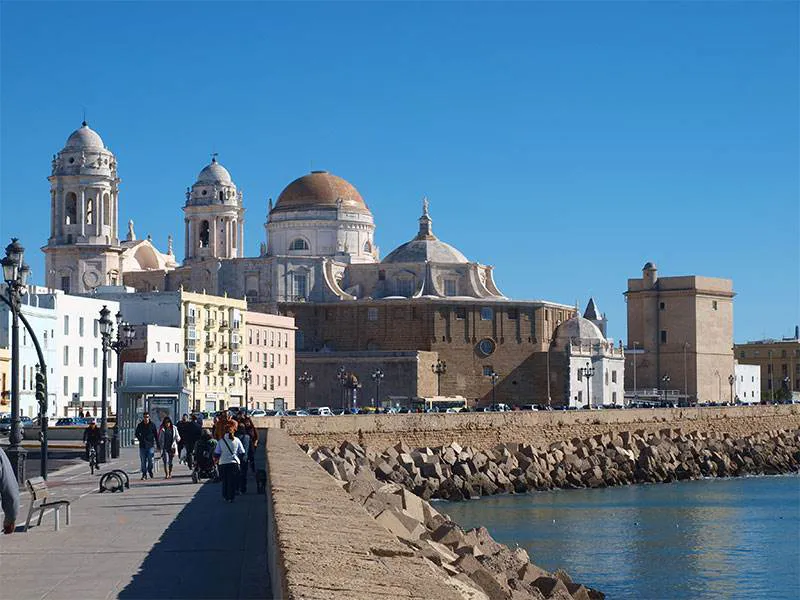
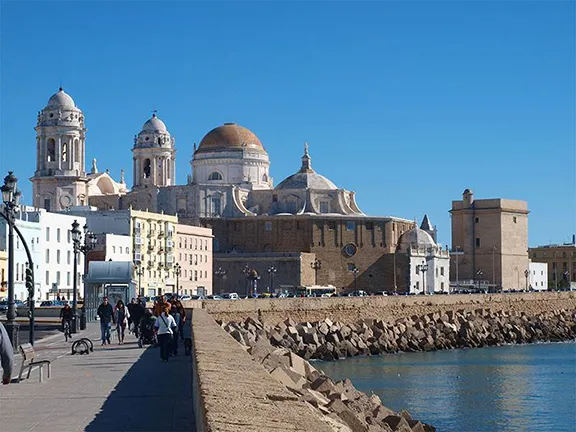
Cadiz
The Second Punic War erupted in 218 BC after Hannibal had sacked Saguntum the previous year in 219 BC. Saguntum was a town near Valencia in Spain that was an ally of Rome. Hannibal then famously crossed the Pyrenees and Alps to harass Rome in Italy leaving his brothers Hasdrubal and Mago in command in Spain. The war was fought in Italy and northern Spain until 211 BC and during that period did not affect the area now known as Andalucia that was firmly held by the Carthaginians. All that changed in 211 BC.
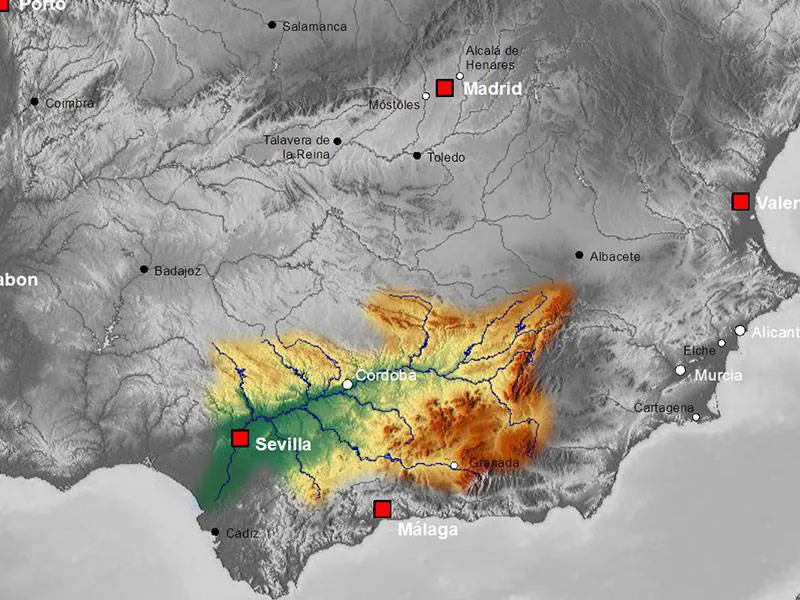
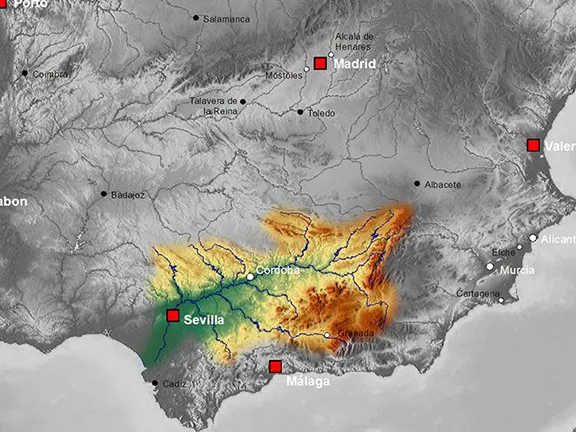
Guadalquivir river basin
The Carthaginian forces under Hasdrubal Barca, Mago Barca and Hasdrubal Gisco were physically divided in the valley of the upper Rio Guadalquivir. They were opposed by Roman troops commanded by two brothers Publius Cornelius Scipio and Gnaeus Scipio who, in turn, split their forces to attack both Carthaginian armies within a few days of each other. The Battle of Castulo, now called Linares in Jaén province, and the Battle of Ilorca, now called Lorca, a town in Murcia region, just across the Andalucia – Murcia border, were fought within a few days of each other and are generally considered to be one battle, the Battle of the Upper Baetis. The campaign was a resounding defeat for the Romans who retreated to north of the Ebro river. Both of the Scipio commanders were killed in the engagements.
Publius Cornelius Scipio had a son who was also called Publius Cornelius. The son was also a general in the Roman Army, and it was the 25-year-old son that was sent to Hispania after the Battle of the Upper Baetis. Publius Cornelius Scipio junior was given the sobriquet Africanus after his African victories later in the Second Punic War.
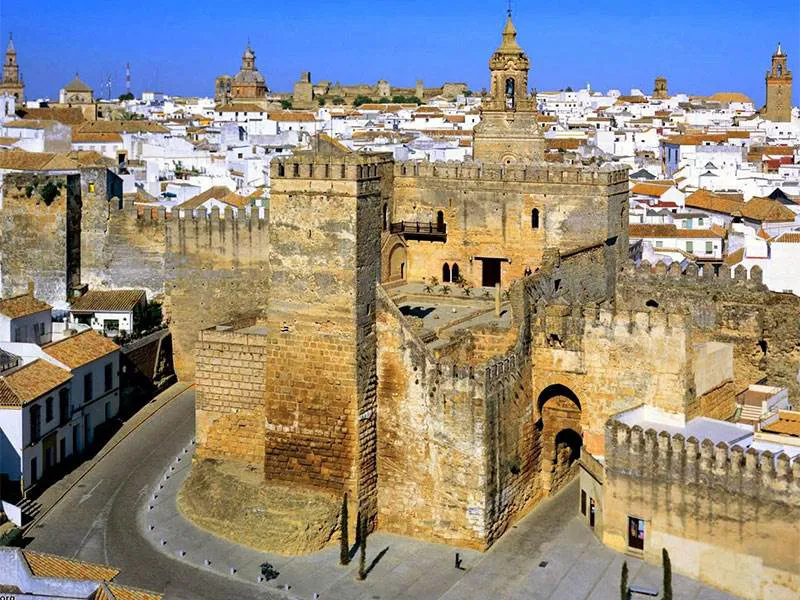
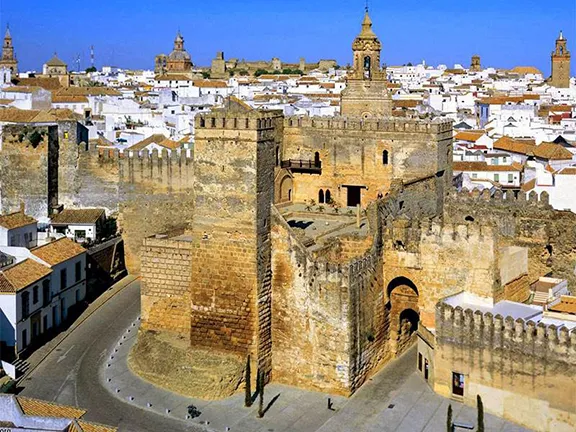
Puerta de Seville Carmona
Scipio was a great tactician. He sailed from Rome and, rather than confront a large Carthaginian force immediately after landing, he chose to land at Carthago Nova, now Cartagena, a port and city in Murcia region, that was, at the time, lightly defended by the Carthaginians. Scipio had 25,000 men and 30 ships. He landed in January 209 BC. The three Carthaginian generals, Hasdrubal Barca, Mago Barca and Hasdrubal Gisco were dispersed, Hasdrubal Barca was in central Spain, Mago had an encampment near Gadir, present-day Cádiz, and Hasdrubal Gisco was near the Tagus river estuary in what is today, Portugal.
Within two weeks Scipio had taken Cartagena and effectively had control of the Mediterranean coast of Spain. He spent the rest of the year consolidating his forces and augmenting them with Celtiberian mercenaries. During this period the Roman army abandoned its use of the gladius sword in favour of the shorter Celtiberian sword the Gladius Hispaniensis or Spatha.
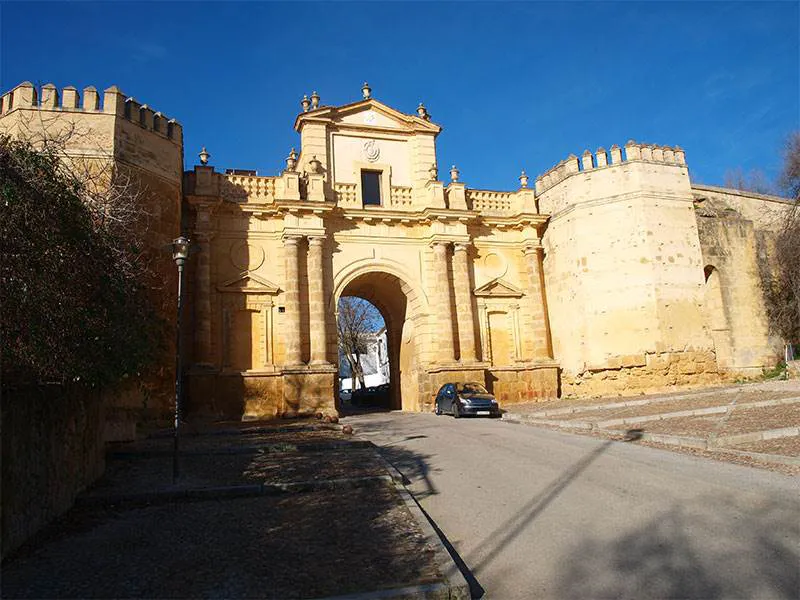
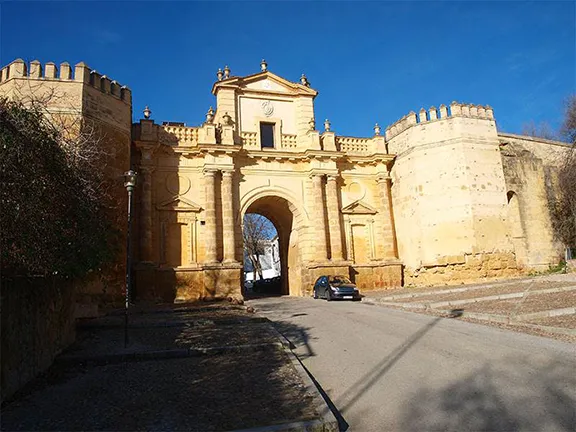
Puerta de Cordoba Carmona
In 208 BC, Scipio was ready to take on the main Carthaginian armies. He marched his forces that consisted of between 40 and 50,000 Romans and Celtiberians, from Cartagena, west and north to Baecula, now Bailen, about 40 kilometres north of Jaén in the province of the same name. At Bailen, in the upper reaches of the river Baetis (Guadalquivir river), Scipio was confronted by a 30,000 strong Carthaginian army led by Hasdrubal Barca. Hasdrubal was defeated and retreated north into the interior of Hispania and then left Spain altogether to try to join up with his brother, Hannibal, in Italy. Most of the Spanish tribes in what is now eastern and central Andalucia allied themselves with Rome.
Scipio was now firmly established in the upper part of the Guadalquivir river valley. Mago moved eastwards to meet him from his encampment at Cádiz, and Hasdrubal Gisco moved his forces south. Carthaginian reinforcements had arrived from Africa in the shape of a Numidian force under a General Masinissa. The four armies met near Carmo, now Carmona, a small town in the Guadalquivir valley, 40 kilometres east of Seville. The combined Carthaginian army consisted of 70,000 infantry, 5,000 horse-mounted cavalry and 36 war elephants that Mago had kept in his camp near Cádiz. Scipio had about 20,000 infantry and 1,500 cavalry. The Carthaginians were humiliatingly defeated, losing 15,000 of their men against only 800 Roman casualties.
The remaining Carthaginian forces retreated west towards Cádiz. In his history of wars in Spain, Appian, a Greek historian, writing about three hundred years later, says the Carthaginians holed up in a stronghold, forcing Scipio to lay siege. The fortress could easily have been Carmona. Between 230 and 220 BC, the Carthaginians had built the Puerta de Sevilla and its bastion transforming Carmona into a heavily fortified town. Even Caesar, much later, was awed by the gates and walls of Carmona that are still in good condition today.
Scipio returned to Cartagena leaving his general, Silanus, to carry on the siege until he felt unable to do more, Appian is a little unclear at this point as to how the siege ended. The remaining Carthaginians slipped away to Cádiz to reconsolidate before facing the Romans in the last, epic, battle to be fought in Spain during the Punic Wars.
Following the Carthaginian retreat to Cádiz, and the Roman army withdrawal to Cartagena, the Carthaginian force was augmented by reinforcements from North Africa under general Hanno and another influx of Celtiberian mercenaries. The combined forces of Mago and Hanno was between 54,000 and 74,000. According to the source, Scipio started the 206 BC campaign season with between 48,000 men (Livy) and 70,000 men (Polybius).
In the spring of 206 BC, the Carthaginians made a last-ditch attempt to retake territory in Hispania that they had lost to the Romans over the previous four years. Mago and Hanno marched from Cádiz to Ilipa, now Alcalá del Rio in Seville province, where Hasdrubal Gisco and his army joined them.
The battle started as a series of skirmishes as the two sides probed each other’s defences. After two days, Scipio ordered his men fed early and then launched them against the Carthaginians before they had time to eat their breakfast. At the time this move was considered unsporting, but history reveals that Hannibal had first used the tactic before the Battle of Trebbia River in 218 BC.
Over the day the Roman armies maintained constant pressure on the Carthaginian forces allowing hunger and fatigue to wear down the Carthaginians. The Carthaginian flanks collapsed late in the day, and Scipio ordered a general advance. As a result only about 6,000 of the Carthaginian troops survived. The Romans lost about 7,000 men. Hasdrubal and Mago escaped, but they were never again in a position to challenge Roman supremacy in Spain. Hasdrubal fled to north Africa where he next appears in the court of the Numidian king Syphax. In one of those strange twists of fate, Scipio was at the court of Syphax at the same time, arranging for mercenaries to serve alongside the Roman army and once again met Hasdrubal, but this time on neutral ground. Mago Barca went to the Balearics and from there to Liguria to attempt an invasion of northern Italy.
Following the battle, Rome controlled Hispania south of the mineral-rich Sierra Morena, a mountain system that runs from Badajoz in the west to the northern edge of the Cordilleras Betica in the east. The territory included the fertile valley of the Rio Guadalquivir and encompassed present-day Andalucia. The Romans called it Hispania Ulterior.
&title=caliphate-of-cordoba-929-1031-adIt is not difficult to see why the Romans found Hispania Ulterior so attractive. The mineral reserves in the Huelva and Cartagena regions, primarily lead, gold, silver, and copper were worth unimaginable amounts and the Romans had been paying over the odds for them for many years via trade with the Carthaginians, now they could exploit them directly. The fertile strip of land on the coast and up the valleys of the Guadalquivir produced grain, olives for oil, grapes for wine, honey and figs. The area was also known for its horses and mules, its pottery, sea salt and garum, a fish condiment. Altogether a very valuable piece of real estate.
The Roman Republic did not have any standing armies, so they developed quite an enlightened system. Any man, whether Roman born or not, who had served with the legions, was given the status of a Roman. These men, (on retirement, that usually occurred when a campaign had ended rather than a fixed term of years), were entitled to land and property in the territory they had helped conquer, or they could take their accumulated pay (much obtained through plunder) back to Italy. Many, mainly the native-born, choose to stay. The Romans thereby got a colonising force and a reserve that could be called upon in the event of future uprisings in the colonised area. They became established in Colonia, which initially denoted an outpost and eventually the highest status of a Roman city.
Scipio’s priority was to secure the area he had conquered and establish outlets for trade. Scipio established permanent garrisons at Tarragona (Tarraco), Cartagena (Cartago Nova), and in Andalucia, Cádiz (Gades). Cádiz was already a sophisticated city having been thoroughly ‘Orientalised’ during the Phoenician period, and it became a fully-fledged Colonia in 200 BC. Corduba was taken in 206 BC, as was Carteia, the Carthaginian port on the Bay of Algeciras, near San Roque. Both had to be ignored for the time being because Scipio did not have sufficient numbers of troops to occupy all the towns and cities he had taken.
Scipio’s second priority was to make the colonies and the standing armies, self-sufficient. He did this by collecting food, clothing and other supplies from the local tribes and booty from those tribes that had opposed him. Grain was obtained that was exported to Rome to raise money to pay the army in Spain. The fertile valley of the Baetis (Rio Guadalquivir), became a ‘breadbasket’ for Rome. Not unnaturally this policy was not looked on favourably by the natives who had enjoyed a somewhat more profitable arrangement previously.
Although the Second Punic War dragged on until 201 BC, the action during the last four years took place in Africa, Sicily and Italy.